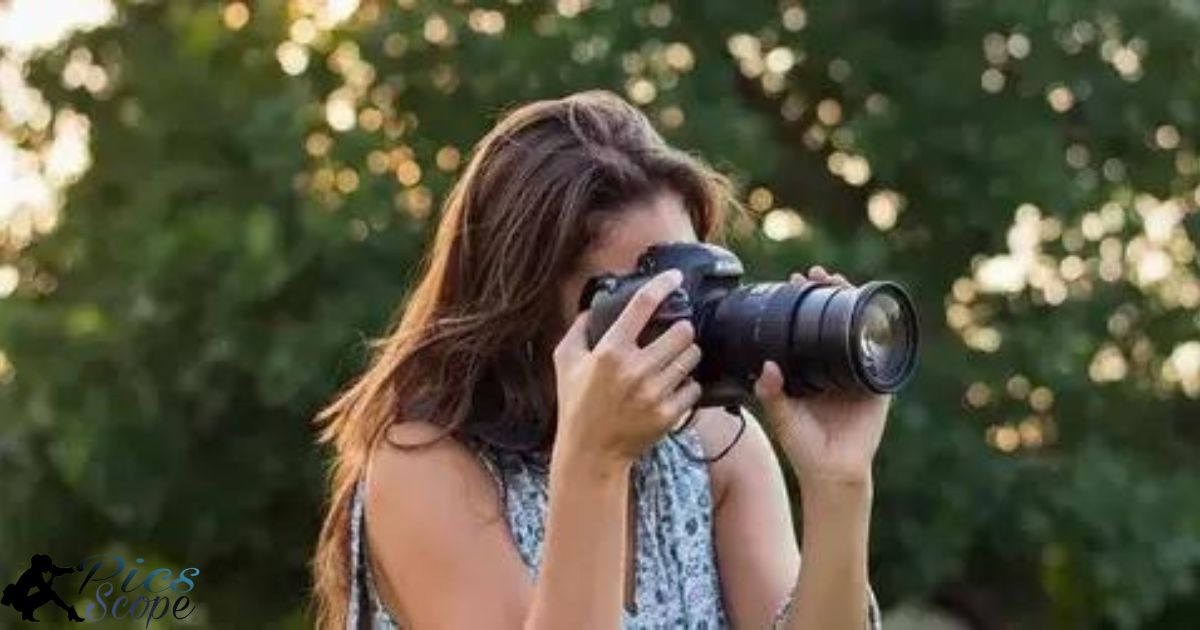Digital photography differs from traditional photography because it uses electronic sensors to capture images instead of film. Unlike traditional cameras, digital ones store images as data files, allowing instant review and deletion. Editing digital photos is easier with software, unlike traditional darkroom techniques for film.
In the ever-evolving world of photography, one question echoes through time. What distinguishes digital photography from traditional photography? Delve into this realm where pixels replace film, instant results defy darkroom magic, and the art of capturing moments evolves with the click of a button.
Stay with us to explore the fascinating shift from traditional photography to digital. Discover how electronic sensors replaced film, enabling instant image storage and manipulation. Witness the evolution that revolutionized how we capture, edit, and cherish moments through digital photography’s transformative differences.
What Is Digital Photography?
Digital photography revolutionized how we capture images. It uses electronic sensors to record pictures instead of film. These sensors instantly convert light into digital data, allowing for quick image storage and manipulation.
Unlike traditional film cameras, digital photography offers immediate feedback. Photographers can review their shots instantly on the camera’s display. This instant review allows for adjustments to be made on the spot, ensuring better quality images.
What Are The Advantages Of Digital Photography?
- Instant Review: View and assess photos immediately after capturing them.
- Editing Flexibility: Easily manipulate and enhance images using editing software.
- Cost-Effective: No need for film rolls or darkroom processing, reducing expenses.
- Convenience: Digital files allow for easy storage, transfer, and sharing of photos.
- Adjustable ISO Settings: Change sensitivity to light for various shooting conditions.
- Environmentally Friendly: Eliminates the need for chemical processing used in traditional photography.
- Higher Capacity: Memory cards store numerous photos, reducing the need to change rolls frequently.
- Quick Results: Digital cameras offer faster turnaround times for finished images.
Digital Photography Vs. Film Photography

Digital photography and film photography stand apart in their capturing methods. Digital cameras use electronic sensors to capture images, storing them as data files for easy access and editing. In contrast, film photography relies on light-sensitive film to record images, requiring chemical processing before viewing.
On the other hand, film photography demands patience, waiting for development and printing to see the final results. Both methods offer distinct experiences, with digital providing convenience and quick edits, while film embodies a slower, more deliberate process.
What Is Film Photography?
Film photography involves using a light-sensitive film to capture images in a camera. A roll of film loaded into the camera captures light when exposed, creating a latent image. This film must undergo chemical processing to develop the captured image before it can be viewed or printed.
The process of film photography demands precision and mindfulness. Photographers control settings like aperture, shutter speed, and focus manually to achieve desired results. Once the film is developed, the tangible nature of printed photographs offers a unique, nostalgic charm that digital photography sometimes lacks.
Why Use Film?
Film photography offers a tactile experience, allowing hands-on control over the entire process. You select the film, adjust settings, and develop the images yourself. The organic nature of film grants a unique aesthetic, creating images with depth and character not easily replicated in digital formats.
With limited exposures, every frame becomes valuable, prompting careful consideration of composition and lighting before clicking the shutter. Embracing film photography fosters a deliberate and thoughtful approach, resulting in a deeper connection to the art of capturing moments.
How Do I Create Unique Digital Photography Work?
Start a photography business on the side by leveraging your unique style. Experiment with angles, lighting, and editing to craft captivating shots. Infuse creativity into every photograph to kickstart your entrepreneurial journey.
Developing originality in digital photography involves continuous practice and exploration. Engage in various genres, adapt different shooting styles, and actively seek inspiration from your surroundings. Incorporate your distinct perspective and emotions into every frame, allowing your creativity to shine through in your digital photography work.
How Can I Develop My Skills As A Photographer?

To enhance your skills as a photographer, practice regularly. Experiment with different subjects, lighting, and compositions. Join photography communities or workshops to learn new techniques and gain insights from experienced photographers.
Study the work of renowned photographers. Analyze their compositions, use of light, and storytelling. Don’t hesitate to seek feedback on your work; constructive criticism helps refine your skills and fosters growth in photography.
How Can I Turn My Photography Skills Into A Career?
You can turn your photography skills into a career by first honing your craft. Practice regularly, experiment with different styles, and build a diverse portfolio showcasing your best work. Networking with other photographers and potential clients helps in gaining exposure and opportunities.
Once you feel confident in your abilities, consider offering your services professionally. Start small by taking gigs for events, portraits, or product photography. Use social media platforms or create a website to showcase your portfolio and reach potential clients.
What Is The Difference Between Analog And Digital Photography?
| Aspect | Analog Photography | Digital Photography |
| Image Capture | Uses film to record images | Uses electronic sensors to capture images |
| Image Storage | Images stored as negatives or slides | Images stored as digital files (JPEG, RAW, etc.) |
| Viewing & Printing | Requires printing from negatives or slides | Can be instantly viewed and printed |
| Editing & Manipulation | Limited ability for editing and manipulation | Easily editable using software applications |
| Image Quality | May have a unique, classic aesthetic | Provides higher resolution and flexibility |
| Workflow | Lengthy process from capture to print | Quick and efficient workflow |
What Distinguishes Digital Photography From Traditional Photography
Digital photography differs fundamentally from traditional photography. In digital, electronic sensors capture images instead of film, enabling instant viewing and editing. Unlike traditional cameras, digital devices store images as data files, offering quick access and easy manipulation through editing software.
Traditional photography, on the other hand, relies on film to capture images. It involves a complex process of developing and printing photographs in a darkroom. Unlike digital, traditional photography doesn’t allow for immediate viewing or easy editing, relying more on manual techniques for image manipulation.
How Do Contemporary Photographers Manipulate Digital Images?
Contemporary photographers wield digital tools to alter images creatively. They use software like Photoshop to adjust colours, remove imperfections, and enhance details. These artists employ various techniques to craft captivating visuals, adding elements or merging multiple images to convey their unique vision.
Through software mastery, contemporary photographers wield a digital palette. They skillfully retouch photos, applying filters or combining layers for stunning effects. Their artistry lies in transforming raw captures into captivating compositions, showcasing the boundless possibilities of digital image manipulation.
Why Has Photography Been Useful In Influencing Social Change?

Photography plays a crucial role in influencing social change by vividly showcasing realities. Photographs capture raw emotions, stirring empathy and driving action. These images become powerful tools, raising awareness and galvanizing movements for justice and equality.
Through compelling visuals, photography exposes societal issues, igniting conversations and spurring change. Images serve as unfiltered evidence, compelling viewers to confront uncomfortable truths. They transcend language barriers, speaking volumes and mobilizing individuals towards impactful social transformation.
One Of The Earliest Types Of Photography
- Daguerreotype: Developed in the 19th century using silver-coated copper plates.
- Relied on exposure to light and chemicals for image creation and development.
- Marked a significant advancement in visual documentation and early photography.
- Calotype: Introduced by William Henry Fox Talbot around the same era.
- Utilized paper coated with silver iodide to produce negatives.
- Allowed for multiple reproductions, pioneering image duplication in early photography.
What Provided The Artistic Model For Photographic Portraits?
Artists from the Renaissance era laid the groundwork for photographic portraits. They influenced composition, lighting, and posing techniques. Paintings by masters like da Vinci and Rembrandt inspired early photographers, shaping the artistic vision behind photographic portraits.
In the 19th century, the daguerreotype and calotype processes mimicked classical portraiture. These methods adapted the aesthetic principles of paintings into photographic form. Their emulation of artistic styles became the foundation for the evolving art of photographic portraiture.
Which Contemporary Photographer Uses A Process Called Chlorophyll Printing?
Contemporary photographer Binh Danh is known for employing the unique chlorophyll printing process. He harnesses nature’s power, imprinting images onto leaves using sunlight and chlorophyll, creating stunning, ethereal photographs.
Another contemporary artist, Robert Buelteman, also explores chlorophyll printing. He captures mesmerizing images by placing objects on leaves, exposing them to light, and harnessing the chlorophyll’s pigment to embed visuals onto the leaf’s surface.
FAQ’s
What is the difference between digital and traditional image editing?
Traditional editing: manual methods on prints. Digital: software manipulation on a computer.
What is the difference between digital photography and traditional photography?
Digital photography uses sensors, not film, to capture images, unlike traditional methods reliant on film.
What is the difference between a photograph and a digital image?
A photograph is a physical image on film/paper, while a digital image exists as electronic data in files.
Conclusion
Furthermore, the distinction is evident in the accessibility and flexibility offered by digital photography. The ability to instantly review, edit, and share images contrasts starkly with the time-consuming processes of traditional photography, such as darkroom development.
What Distinguishes Digital Photography From Traditional Photography? Encapsulates the pivotal differences from the medium of image capture to the swift adaptability and innovative tools digital photography provides, revolutionizing the art and practice of photography.







